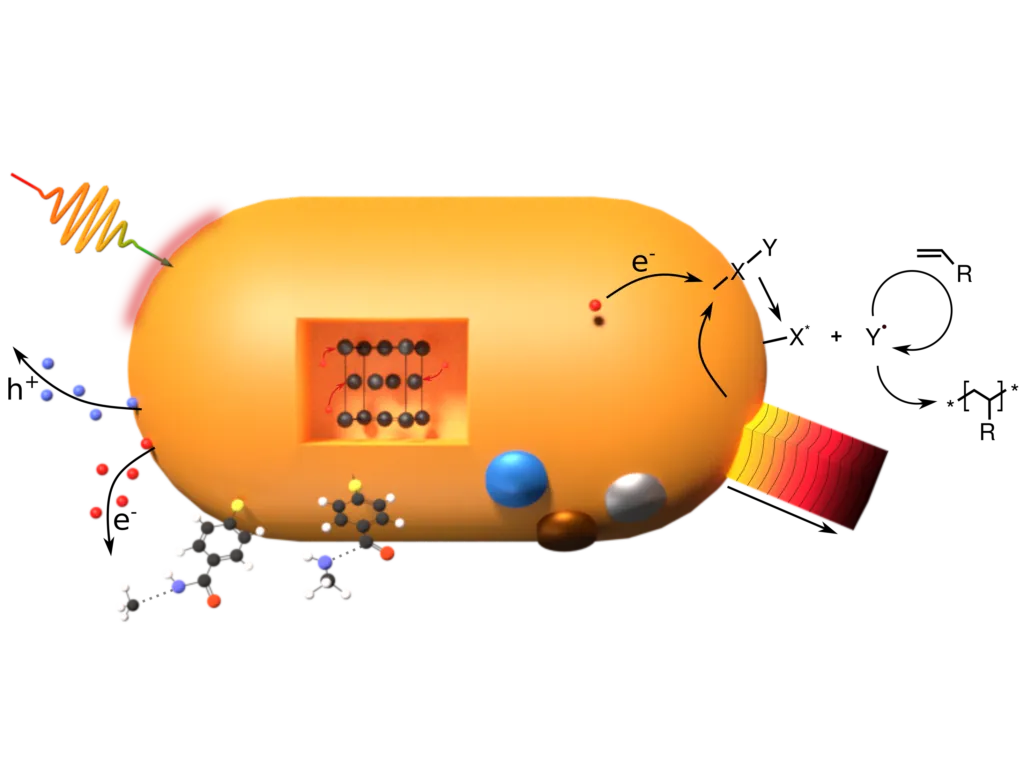Collaborative Research Centre “Nanoscale Metals” raises 11 million euros

Licht wird durch den Nanopartikel fokussiert und die Energie lokal in verschiedene Formen umgewandelt, die dann Chemische Transformation antreiben. © Felix Stete
Several HZB research teams are participating in the new SFB 1636 "Elementary processes of light-driven reactions on nanoscale metals".
Research on Nansoscale Metals
“We are excited and look forward to the new synergies that can arise from this,” says Prof. Matias Bargheer, who is one of the spokespersons for the new Collaborative Research Centre, led by University of Potsdam. The HZB scientists Renske van der Veen, Yan Lu and Alexander Föhlisch are also involved, in addition to the team of Bargheer, who heads a joint research group at the University of Potsdam and HZB.
The research project aims to help understand the elementary processes that trigger light-controlled chemical reactions on metals at the nanoscale. “There are still many unanswered questions at this fascinating transition between physics and chemistry and we can already apply our concepts to organic coupling reactions and polymerisations, e.g. to functionalise nanoparticles asymmetrically,” says Prof. Dr. Matias Bargheer, talking about the struggles as well as the perspectives of their collaborative research.
Antonia Rötger
https://www.helmholtz-berlin.de/pubbin/news_seite?nid=25526;sprache=en
- Copy link
-
Hydrogen storage in MXene: It all depends on diffusion processes
Two-dimensional (2D) materials such as MXene are of great interest for hydrogen storage. An expert from HZB has investigated the diffusion of hydrogen in MXene using density functional theory. This modelling provides valuable insights into the key diffusion mechanisms and hydrogen's interaction with Ti₃C₂ MXene, offering a solid foundation for further experimental research.
-
HZB and National University Kyiv-Mohyla Academy start cooperation in Energy and Climate
Helmholtz-Zentrum Berlin für Materialien und Energie GmbH (HZB) and the National University of "Kyiv-Mohyla Academy" (NaUKMA) have signed a Memorandum of Understanding (MoU). The MoU serves as the starting point for collaborative research, academic exchange, and capacity-building between the two institutions. Actions will be taken to establish the Joint Research and Policy Laboratory at NaUKMA in Kyiv. The aim of the future laboratory is to jointly develop research and policy analysis, focusing on the energy and climate dimensions of Ukraine’s EU integration.
-
MAX IV and BESSY II initiate new collaboration to advance materials science
Swedish national synchrotron laboratory MAX IV and Helmholtz-Zentrum Berlin (HZB) with BESSY II light source jointly announce the signing of a 5-year Cooperation Agreement. The new agreement establishes a framework to strengthen cooperation for operational and technological development in the highlighted fields of accelerator research and development, beamlines and optics, endstations and sample environments as well as digitalisation and data science.
